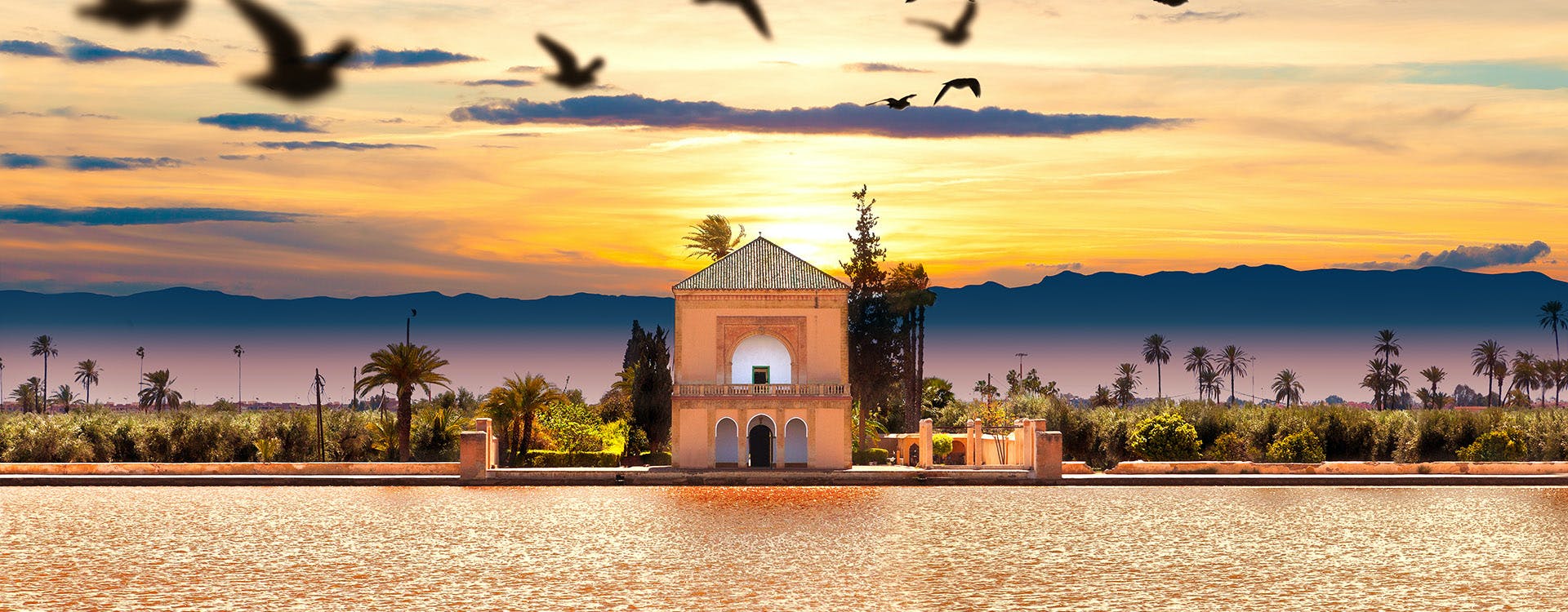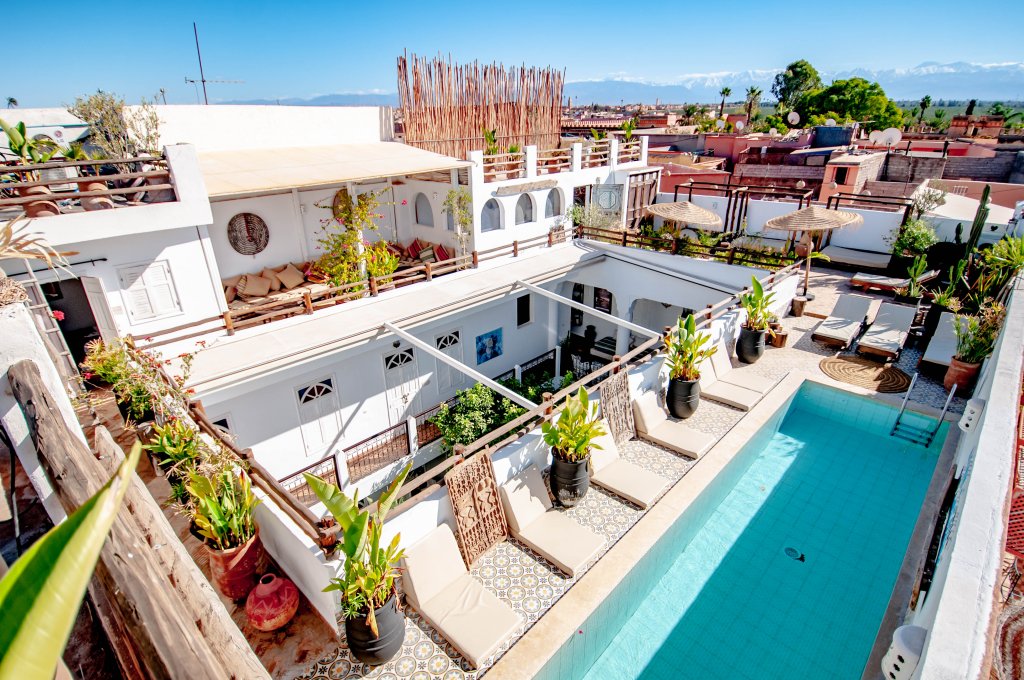The layout of a riad follows a traditional Moroccan architectural style centered around a central courtyard. This inward-facing design maximizes privacy and creates a tranquil, shaded atmosphere. Here’s a breakdown of a typical riad layout:
1. Central Courtyard (Patio)
- The heart of the riad is its open-air courtyard, which is usually square or rectangular.
- The courtyard often features:
- A fountain or small plunge pool.
- Trees, plants, or sometimes a garden.
- Seating areas with cushions or traditional Moroccan furniture for guests to relax.
- The courtyard provides natural ventilation and light to the rest of the house and serves as the main social and relaxation space.
2. Surrounding Rooms
- The rooms in a riad are arranged around the central courtyard and face inward, rather than outward to the street.
- Ground Floor:
- On the ground level, you’ll usually find common areas such as:
- Living rooms or lounges for guests to gather or have tea.
- Dining area where meals are served, sometimes adjacent to the courtyard.
- In some riads, the kitchen is also on the ground floor.
- Upper Floors:
- The guest rooms or suites are typically located on the upper floors surrounding the courtyard.
- These rooms open out onto balconies or galleries that overlook the courtyard below.
- Rooms vary in size and decoration but often feature traditional Moroccan touches like zellige tiles, plaster carvings, and mosaic floors.
- Some larger riads may have suites with private terraces or seating areas.
3. Roof Terrace
- Most riads feature a rooftop terrace that provides stunning views of the medina or the surrounding area, including city landmarks or the Atlas Mountains.
- The rooftop terrace is often used for:
- Relaxation or sunbathing.
- Dining, especially breakfast or dinner.
- In some riads, there may be a rooftop garden, seating areas, or even a small jacuzzi or pool.
- The terrace is also a perfect spot to watch the sunset or enjoy the call to prayer from nearby mosques.
4. Entrances and Hallways
- The entrance to a riad is typically very modest from the outside, often just a simple door in a narrow alleyway of the medina. This contrasts with the beautiful, ornate interiors that open up inside.
- The hallways or corridors connecting the rooms usually wrap around the courtyard. Since the riad is inward-facing, these hallways are private and often decorated with traditional Moroccan designs.
5. Other Features (in larger or luxury riads)
- Some larger or more luxurious riads might include additional features like:
- A hammam (traditional Moroccan steam bath).
- A library or small office space.
- Spa or massage rooms for guest relaxation.
- Multiple courtyards or larger gardens.
Summary of the Riad Layout:
- Central Courtyard: The focal point, often with a fountain or small pool.
- Surrounding Rooms: Guest rooms, dining, and lounge areas open onto the courtyard.
- Upper Floors: More guest rooms or suites with balconies overlooking the courtyard.
- Rooftop Terrace: A relaxing space with views over the medina or city.
- Entrance: Simple and understated from the outside, contrasting with the ornate interior.
This inward-facing layout provides privacy, quiet, and a cooling environment, creating a peaceful retreat amidst the hustle and bustle of the medina.


